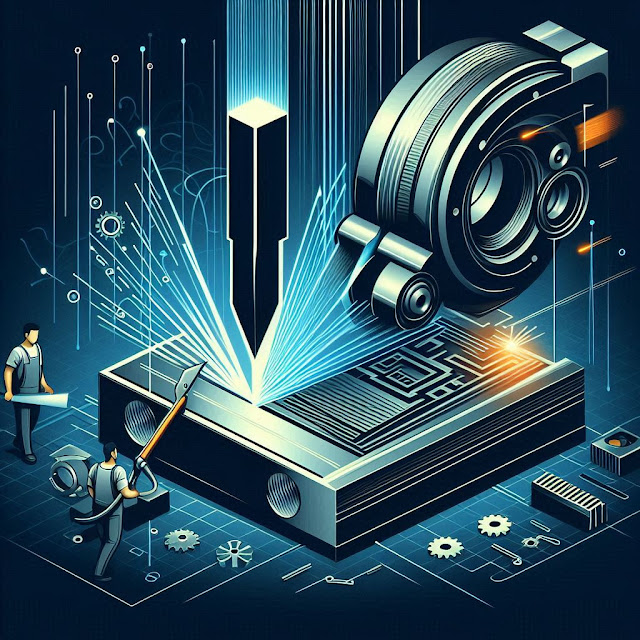Introduction
In today’s highly competitive manufacturing environment, achieving exceptional product quality and maintaining a distinct edge in design innovation hinges on adopting the most advanced production methods available. Among the numerous technological enhancements reshaping industries, precision cutting is a vital cornerstone—empowering manufacturers to deliver products that exemplify unmatched quality, reliability, and intricate design detail. As technological progress accelerates, companies such as Bluegrass Bit are at the forefront, offering state-of-the-art metal cutting services that continually raise the standard for accuracy, efficiency, and repeatability in modern manufacturing.
Precision cutting equips manufacturers with the ability to produce components that adhere strictly to exacting standards—crucial not only for the visual and functional appeal of the end product but also for endurance and performance under rigorous conditions.
The Role of Precision Cutting in Product Quality
Precision cutting ensures that every component is fabricated within extremely tight tolerances, leaving little to no margin for error. This level of exactness is paramount for achieving seamless fits in product assemblies and producing finished goods that maintain their integrity throughout use. A poorly or inconsistently cut part can introduce issues during assembly, compromise the structural soundness of the final product, and ultimately result in higher rejection rates and warranty claims. For instance, industries such as automotive manufacturing depend on high-precision parts to minimize the risk of mechanical failures. High-precision elements contribute to vehicles that not only last longer but consistently meet high safety and reliability standards over years of operation.Advancements in Precision Cutting Technologies
The rapid development of Computer Numerical Control (CNC) machinery and innovations in laser cutting and waterjet technologies have transformed the manufacturing landscape. These advanced tools now enable manufacturers to achieve tolerances within just a few microns—far beyond the capabilities of traditional manual cutting techniques. CNC systems allow for complex geometric patterns to be programmed and replicated with extraordinary accuracy, batch after batch, ensuring each component matches the intended design regardless of production volume.
Integrating CNC-controlled cutting and high-powered laser systems has increased product quality and consistency.
Impact on Design Flexibility
Perhaps one of precision cutting's most transformative impacts is its effect on design flexibility. Advanced cutting techniques give engineers and product designers unprecedented freedom to realize intricate, detailed patterns and features that were difficult or impossible to achieve with older technologies. Traditional cutting tools, limited by their diameter or reach, often forced compromises in design. In contrast, laser and waterjet cutting systems follow digital blueprints precisely, making it feasible to translate innovative computer-aided designs directly into tangible components.
Material Efficiency and Cost Reduction
Material efficiency is a primary advantage of precision cutting that directly and indirectly benefits manufacturers. Companies can significantly minimize offcuts and unnecessary scrap by carefully planning cuts and maximizing the usable area of each raw material sheet. For large-scale production runs, such optimization translates to major cost savings. Furthermore, precise cutting leads to fewer defective parts and less need for extensive post-processing or rework, reducing total manufacturing expenditure.
Challenges and Considerations
Despite its many benefits, implementing precision cutting technologies comes with its own set of challenges. The upfront capital investment for acquiring advanced machines, such as CNC mills or industrial-grade lasers, can be substantial, and this financial burden is often amplified for small to mid-sized manufacturers. In addition, specialized training is critical—operating and maintaining these cutting systems requires a team of skilled technicians who can keep up with continuous technological advancements.
Regular maintenance, frequent calibration, and systematic quality assurance protocols are also necessary to guarantee that precision cutting equipment continues to deliver reliable performance. Any deviation from set tolerances can cascade into costly material waste, production delays, or product recalls. Consequently, striking the right balance between capital expenditure, process optimization, and workforce development is essential to derive maximum value from precision cutting investments.
Conclusion
Precision cutting is a cornerstone of modern manufacturing, enabling unmatched accuracy, greater efficiency, and unprecedented flexibility in design. Its positive influence spans countless sectors, from the exacting demands of aerospace engineering to the intricate requirements of medical device fabrication. As manufacturing technology continues to evolve, precision cutting will expand the frontiers of what companies can achieve—delivering products that are not only high-quality and durable, but also innovative and tailored to the needs of tomorrow’s markets while adhering to sustainability goals. In an era of rapid change and global competition, precision cutting will remain indispensable to product excellence and design leadership across the manufacturing spectrum.






.png)

No comments:
Post a Comment
I value the input of my readers and welcome their engagement. However, in order to maintain a constructive dialogue, I will be moderating comments to remove any spam, excessively critical remarks, or contributions that do not enhance the discussion. I appreciate your understanding in this matter and look forward to receiving your insightful feedback.